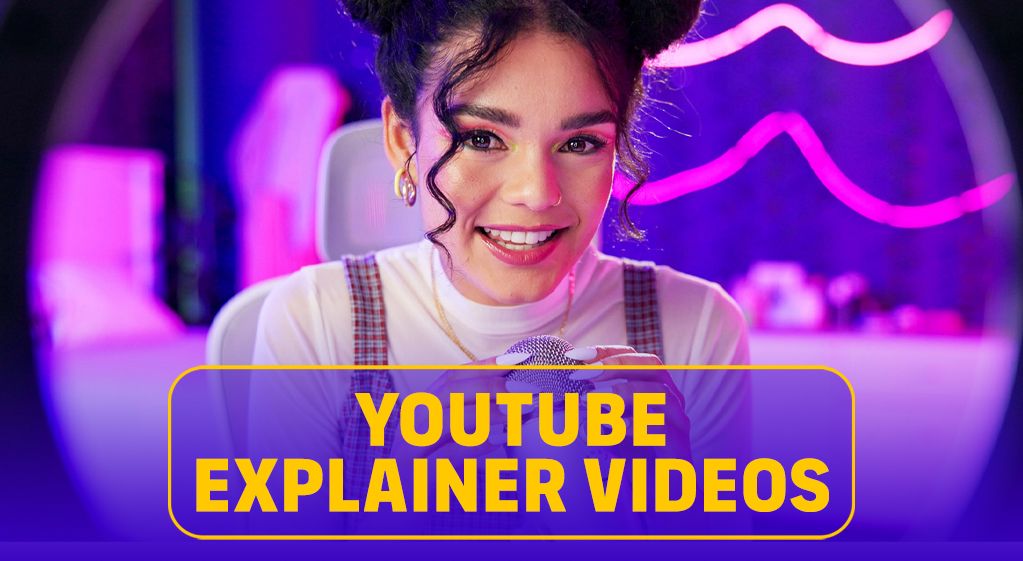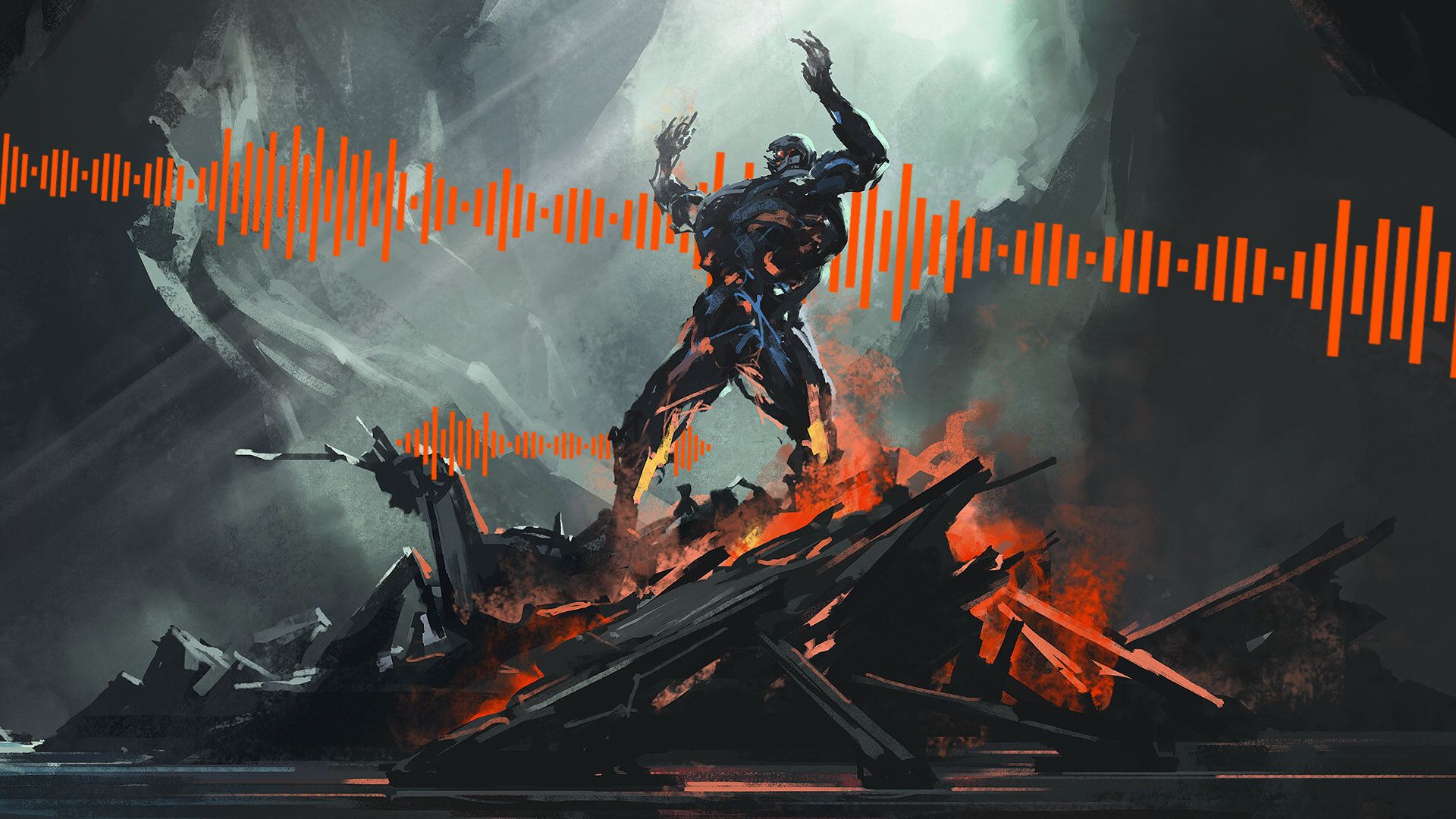Let’s face it. YouTube is both a goldmine and a cesspool of information depending on the given day or search. You can find explainers and product videos for practically everything in existence – need it or not. The “how-to” has taken on a whole new life on YouTube, TikTok and Amazon, for better or worse.
Yes, it’s crowded and the competition is steep, with a seemingly constant barrage of new explainer videos popping every minute. Yet, YouTube remains a powerful platform for reaching, educating and engaging audiences. Whether you’re charged with showcasing a new product or need to break down complex concepts for everyday consumers, your ability to create effective explainer and product videos is key to getting and KEEPING the attention of your target audience.
How can you create YouTube explainers and product videos that deliver eyeballs? In researching the landscape as for ALIBI Music’s brand-new playlist --
-- we came up with a list of 8 best practices that can help give you the edge – resulting in content that isn’t merely informative, but is actually interesting as well.1-Know Your Objectives and Audience
This may seem obvious, but you would be surprised at how much content on YouTube is created by people who clearly didn’t do their homework or even ask: “Who am I trying to reach here and why?”
This should happen before any production starts. You need to clarify your video’s primary goal and that is reaching – and, ideally engaging with – a particular audience segment. This is what will inform pretty much every aspect of your video
What are your objectives? Are you promoting a product, educating viewers, creating a YouTube tutorial? Your answer will help shape your explainer or product video’s content and style.
Once you have that figured out, it’s all about the research that helps you get to KNOW your audience. If you imagine your ideal viewers, do they have an age range, geographic demo, common interests? Do they have a shared problem you can solve with your solution? If you can develop audience personas, these will help guide your content creation and make sure it resonates with your intended viewers.
2-Script it Out in a Compelling Way
If your video script bores you, there’s a high likelihood it will send your viewers to Snoozeville as well… that is, IF they even stick around long enough to start drifting off. Like we said above, YouTube is both a goldmine and cesspool of information at any given time. Making sure your video is regarded as part of the goldmine requires a script that is both well-structured and entertaining.
You’ve got to start with a good hook that captures viewers' attention and does it quickly – we’re talking within the first 10-15 seconds! Your opening must captivate them immediately to compete with everything else out there. Your opening should convey and highlight the value of your video and give viewers a reason to stick around.
The more creative you get, the better, but your YouTube video *should* follow a logical structure. Remember back in high school when we all learned to break writing into Intro, Body and Conclusion? For explainers, it’s about outlining the Problem, Solution and Benefits. For product videos, you’ll focus on Features, Benefits and Usage.
Remember to keep things clear and concise, as – again – we’re dealing with a lot of video competition and short attention spans on YouTube, or even shorter on TikTok. Aim for brevity. Keep explainer videos at typically 1-3 minutes long, while product videos can range from 2-4 minutes. Every word should count, so choose your words wisely and give them a purpose that keeps the viewer engaged.
3-Make it Pretty!
OK… so, maybe not pretty if you’re targeting car buffs and not cosmetics, but you get what we mean. If you want to stand out and be taken seriously, your visuals can’t look like crap. Make them appealing to the eye and appropriate to your objectives – those same objectives we talked about at the top of our list. Your visuals will be the first thing viewers notice (especially on YouTube and TikTok), and they can significantly impact people understanding, enjoy and retain your content.
Make your YouTube explainer or product video look legit by using high-quality graphics, animations and video clips that align with your brand’s visual identity. And keep it all consistent design-wise to help reinforce your brand’s message. Your brand’s colors, fonts and logo (think: style guide) should also be incorporated to create a cohesive and professional appearance.
And be careful not to create visual chaos!Keep all text, images and animations clear and legible. Any images or graphics you use should support your script, not overwhelm it.
4-Give it a Great Voiceover
It goes without saying, but a great narrator or instructor can make a huge difference as you try to engage viewers and communicate your video’s message effectively. Anyone who’s ever sat in a dull college lecture can attest to the fact that you will LOSE audiences equally fast if you’re forced to listen to a drab or monotone professor yammer on. YouTube is even worse. There’s no failed grade if you want to ditch a bad explainer video. You just skip to the next one in your results.
You’ll also want to make sure your recording equipment doesn’t suck. Invest in a high-quality microphone and be sure to use a quiet recording environment so you can obtain the clearest, most professional audio possible.
When you’re ready to record, make sure your voiceover matches your video’s pace and tone – upbeat for energetic product videos, calm for most educational content. Have your voiceover artist clearly enunciate and avoid mumbling or speaking too quickly.
5-Back it Up with Good Music
Hey, if anyone knows just how vital a role music plays in creating emotional impact in videos, it’s ALIBI! This is what we do, and we often describe our business as selling emotion. Music can keep your viewers engaged, but it should always complement, not overpower, the content, especially when it comes to explainers and product videos on YouTube.
You’ll want to find music befitting your video’s mood and purpose (refer back to Tip 1 as a reminder of how important it is to define these things from the get-go. Energetic tracks tend to work well for dynamic product launches, while ambient tracks or underscores are good for explainer videos. You’ll also want to find a music resource that provides stems and alternative versions for every track that help you customize the music to your particular project. We’ve curated some excellent choices (all with stems and alt versions) in our new
playlist!Many times, those requiring music for their YouTube videos will already have an idea of the type of music they want because they’ve been inspired by a similar song. This is what’s called a “reference track.” Having a reference in mind will help you narrow your search. At ALIBI, we made this process that much easier by allowing people to simply paste their reference track’s YouTube URL right into the search bar. AI then helps generate sound-alike tracks based on that music.
But if you’re still unsure what you want, try focusing on what you DON’T want. Recognizing that this is often an easier way to narrow down a search, ALIBI created a “negative search” tool that lets you omit keywords in your search so they don’t show up in results. Don’t want guitars, lose them. Not keen on jazz, remove it. Learn about negative search and other great ALIBI Music search tools
.Also vital is finding music that is royalty-free (or has royalties covered as part of your license), as well as a music library that will cover allowlisting (whitelisting) of the music on YouTube. When content creators post music not properly allowlisted, they risk being shut down by the music rightsholders and – even worse – being fined! Equally important, working with a library (like ALIBI’s) that helps get videos allowlisted also makes sure YouTube creators can still monetize their videos!
6-Give Your Video a Strong Call to Action
Don’t forget to direct your viewers on what to do next and be clear about it. Ask yourself: “What next step should my viewers take after watching my video?” How will you get them to help you achieve your goals?
Find a prominent way to let them know – with an easily noticeable call to action that is either in the video itself or in your YouTube video description. This may take the form of a verbal prompt or onscreen text, or perhaps a clickable button.
But no matter what, be specific. Guide your viewers in a clear direction, whether you want them to make purchase, visit your brand’s website, subscribe for more videos… you get the gist. Just be persuasive about it and convey urgency if necessary. Is there a deadline for action? A benefit they will receive if they “act now”?
7-Make it YouTube-Ready
Pay attention to YouTube’s algorithms for search and recommendation. Do your homework to determine the best keywords for your video’s title, description and tags. Do your own searches to see what comes up in results and tailor your SEO optimization techniques accordingly.
When envisioning how your content will show up, make sure you create thumbnails that grab attention and represent your brand well. When thumbnails are compelling, they can significantly increase your video’s viewership.
Bottom line: make it shareable so your explainer video’s viewers will want to like, comment and share the content with others. And, once it’s out there, don’t forget to engage with any viewers who have left comments. When viewers feel “seen” or “heard,” they’re more likely to come back and you’ll begin to build a community.
8-Reevaluate Your Effort and Be Prepared to Refine
Once your explainer or product video is doing its thing on YouTube, your work doesn’t stop there. Now it’s time to check your progress and use those insights to fix anything that’s not working. It’s OK to adjust and refine. These are steps that will only make your next YouTube experience that much stronger.
What’s cool about YouTube is that the platform’s Analytics can track metrics like watch time, viewer retention and click-through rates, which should give you a good idea of your success (or otherwise) pretty quickly.
Consider any viewer comments or feedback from others on how you might improve future videos. Once you have your first one under your belt, you can experiment with different formats, content and styles based on what resonates most with your audience.
There it is, friends… our recommendations for creating explainers and product videos for YouTube that get eyeballs in 8 simple steps that cover your objectives, audience, messaging, visuals, music, call to action, SEO and more.
And, if you’ve made it this far, please excuse us for one more shameless plug: Try ALIBI Music’s
playlist to back up your next project!


